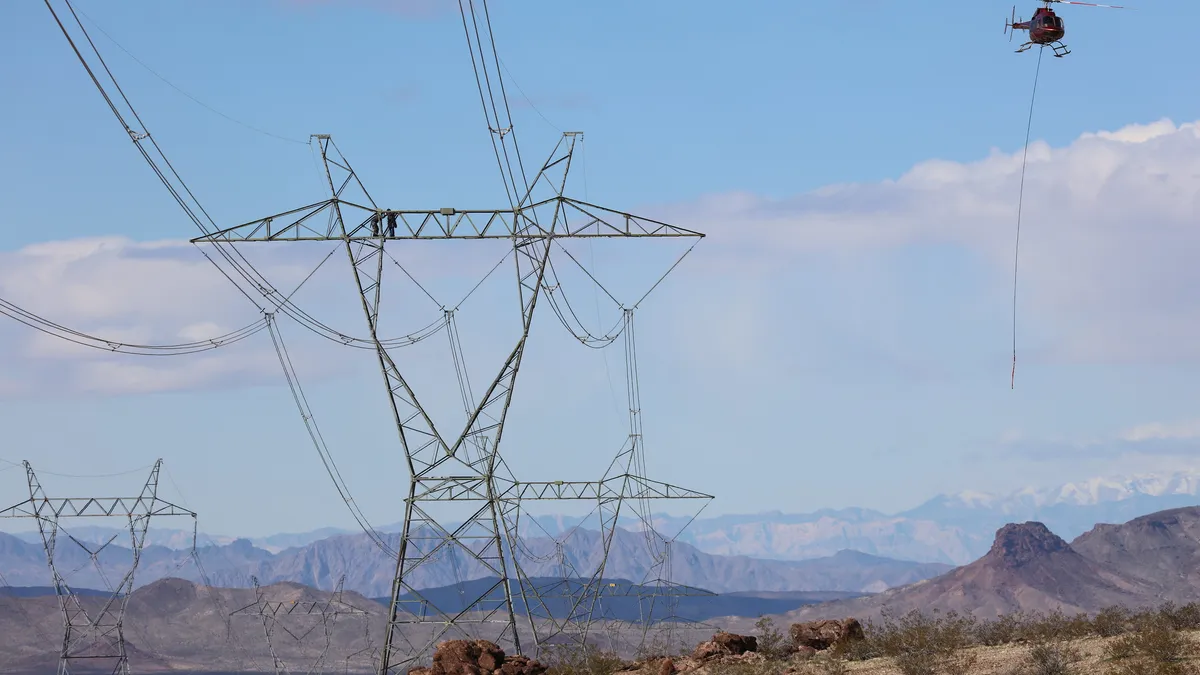Dive Brief:
-
The Bureau of Land Management told a Starwood Energy Group Global affiliate it can begin building a 500-kV transmission line between Arizona and California, an area rich in solar potential, the U.S. Department of the Interior said Thursday.
-
The Ten West Link project, set to handle 3,200 MW, grew out of the California Independent System Operator’s transmission planning process. After finding the roughly $400 million project would provide economic benefits, CAISO held a solicitation process in 2014 and awarded the project to Delaney Colorado River Transmission, an affiliate of Starwood, a private equity company.
-
The project will support the development of utility-scale solar resources and will boost the reliability of the bulk power system in Central Arizona and Southern California, according to the Interior Department.
Dive Insight:
The Ten West Link project is set to run 125 miles between the Delaney substation near Tonopah, Arizona, and the Colorado River substation in Blythe, California. It will be built next to an existing transmission line.
When CAISO evaluated the project, the grid operator found it would reduce costs for California ratepayers by gaining access to less expensive electricity in Arizona, the California Public Utilities Commission said in its November 2021 decision approving the project.
Among the project’s benefits, Delaney Colorado River Transmission expects it will reduce CAISO’s need to curtail renewable energy output on its system, according to the PUC.
The transmission company also said the project would increase the benefits of the Western Energy Imbalance Market, or EIM, to CAISO and Arizona Public Service Co. The transmission line will allow for increased sales of electricity between the grid operator and Phoenix-based utility in the EIM.
“Approving this new transmission line on our public lands will accelerate our nation’s transition to a clean energy economy by unlocking renewable resources, creating jobs, lowering costs, and boosting local economies,” Interior Secretary Deb Haaland said in a statement.
The BLM is processing applications for 64 solar, wind and geothermal projects in the West totaling 41,000 MW, according to the department.
The agency is also conducting preliminary reviews of 90 solar and wind applications as well as 51 applications for wind and solar energy testing on federal lands, the department said.
The “notice to proceed” from the BLM is another sign that transmission projects are making gains in the West.
The BLM in May issued a draft environmental impact statement for the 500-kV SunZia transmission project, expected to deliver 4.5 GW of mainly renewable energy, and in April started reviewing proposed projects in Nevada and Utah.















